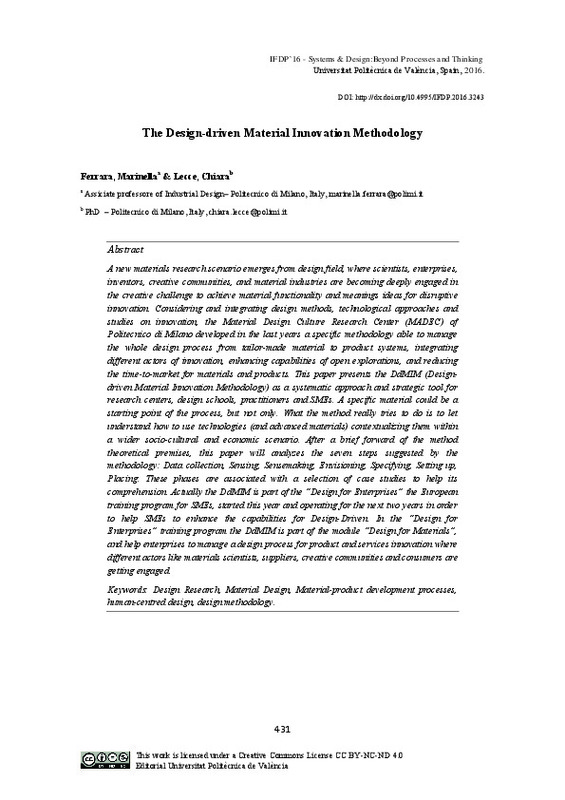JavaScript is disabled for your browser. Some features of this site may not work without it.
Buscar en RiuNet
Listar
Mi cuenta
Estadísticas
Ayuda RiuNet
Admin. UPV
The Design-driven Material Innovation Methodology
Mostrar el registro completo del ítem
Lecce, C.; Ferrara, M. (2016). The Design-driven Material Innovation Methodology. En Systems&design:beyond processes and thinking. Editorial Universitat Politècnica de València. 431-448. https://doi.org/10.4995/IFDP.2015.3243
Por favor, use este identificador para citar o enlazar este ítem: http://hdl.handle.net/10251/87558
Ficheros en el ítem
Metadatos del ítem
| Título: | The Design-driven Material Innovation Methodology | |
| Autor: | Lecce, Chiara Ferrara, Marinella | |
| Fecha difusión: |
|
|
| Resumen: |
[EN] A new materials research scenario emerges from design field, where scientists, enterprises,
inventors, creative communities, and material industries are becoming deeply engaged in
the creative challenge to achieve ...[+]
|
|
| Palabras clave: |
|
|
| Derechos de uso: | Reconocimiento - No comercial - Sin obra derivada (by-nc-nd) | |
| ISBN: |
|
|
| Fuente: |
|
|
| DOI: |
|
|
| Editorial: |
|
|
| Versión del editor: | http://ocs.editorial.upv.es/index.php/IFDP/IFDP/paper/view/3243 | |
| Título del congreso: |
|
|
| Lugar del congreso: |
|
|
| Fecha congreso: |
|
|
| Tipo: |
|








